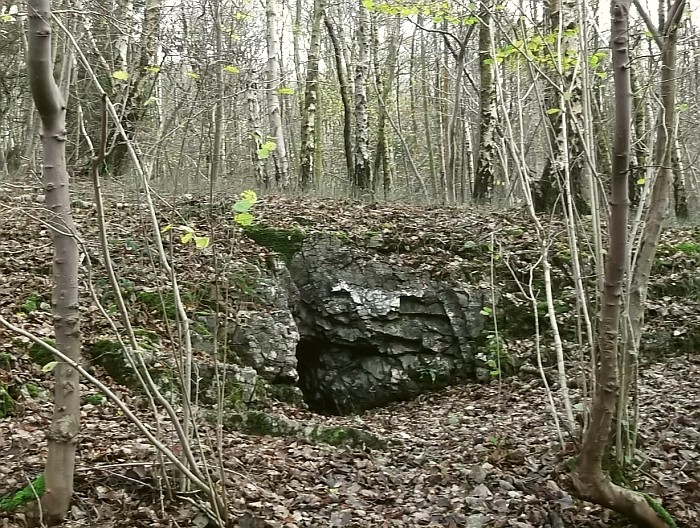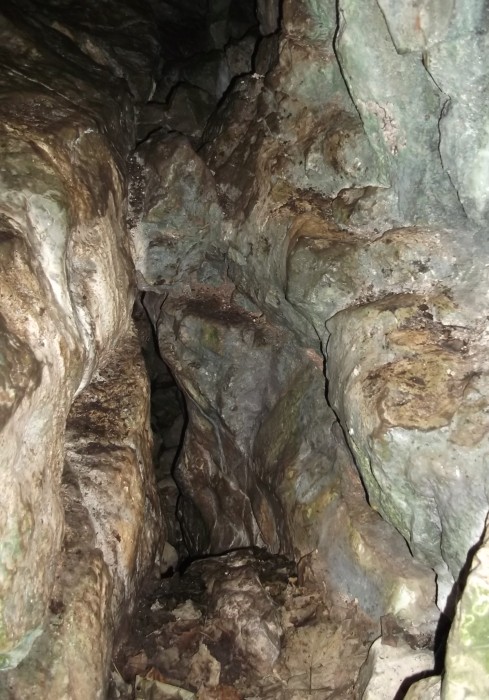
THE ARNSIDE BONE CAVE

| The cave referred to seems to be the one illustrated here, which is in a location that could genuinely claim to be both "half way up the north-west side" and "a little to the south" of the Knott, being on the north flank of the western ridge, yet almost south-west of the summit. I'm not going to reveal its exact location, because it is featured in a geocaching scheme, where it has its own web page with further information on its present state. I will, however, reiterate the emphasis the geocachers put on safety; a slip into the narrow fissure would be most unpleasant, and, as in any cave, a bump on the head is a high probability.
Comparing the description with the present state, it seems that not only has the iron gate been removed, the whole of the first metre or two of low entrance passage has been hacked or blasted away, leaving a sizeable gouge in the hillside. |  |
The upper and lower passages in 2014 |  |